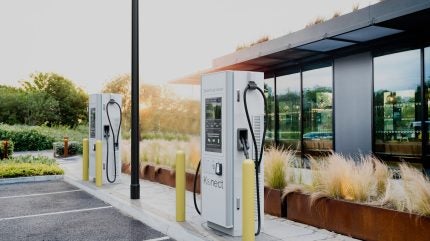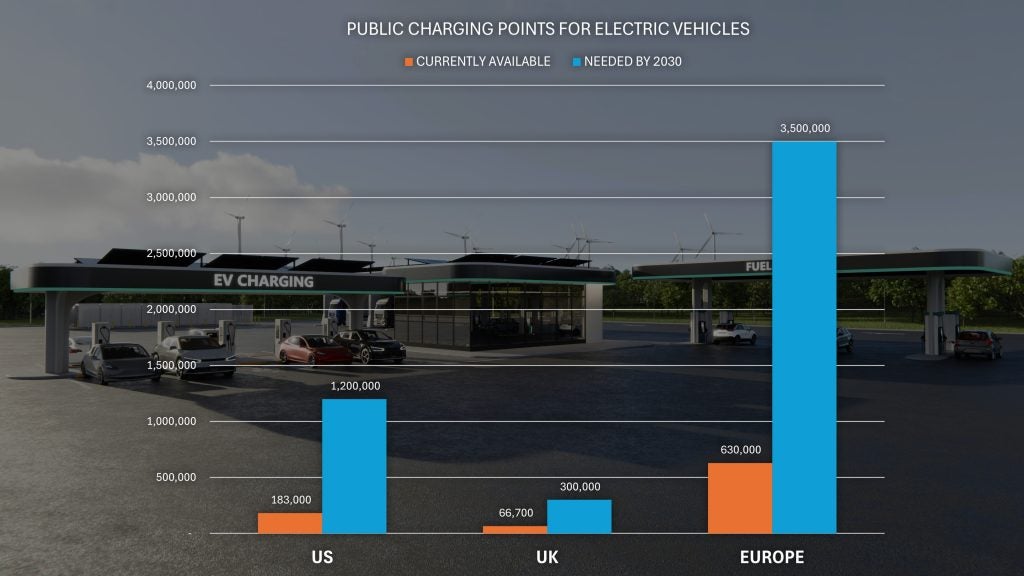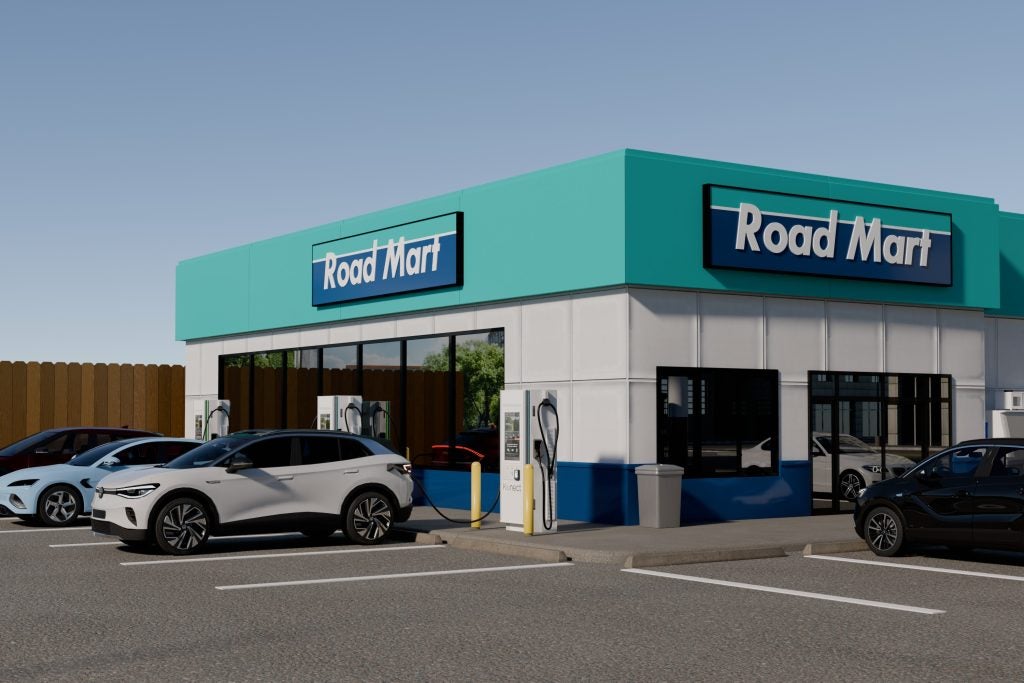
With the 2035 goal for ending the sale of pure ICE cars and light vans in the UK (with the possibility of it being brought forward to 2030 by the current government) many are still fearful over lack of charging infrastructure and potential for EV uptake ahead of that.
With this in mind, Konect, a company who offers a turnkey EV charging infrastructure ecosystem, says it is building an EV solution for fuel retailers.

Discover B2B Marketing That Performs
Combine business intelligence and editorial excellence to reach engaged professionals across 36 leading media platforms.
Konect maintains that fuel retailers have a significant role to play in EV charging in the future and in achieving industry-wide goals. Konect points out that existing fuel retailers already have the sites and land and are familiar fuelling locations to drivers. However, right now they play a small part in public EV charging.
We spoke with Om Shankar, vice president and general manager, Konect, and Neill Emmett, global marketing and brand director, Konect, to discuss why these retailers are playing a small part and how the company is aiming to change that.

Just Auto (JA): Could you provide some background on the company?
Om Shankar (OS): I’m fortunate to lead the Konect business. It’s a business that was born under a company called Gilbarco Veeder-Root. Gilbarco Veeder-Root has been around for 160 years and became a major petroleum dispenser company world-wide.
Ove the years we have formed these incredibly powerful relationships with petroleum retailers all over the world.
As you can imagine there’s a lot of confusion and some big question marks from them right now on what the future holds given the decarbonisation goals that policy makers are forming.
We formed Konect a few months ago with the aspiration of helping fuel retailers along the transition. Our thesis is that fuel isn’t going anywhere for a long time, but EV is coming, and it’s coming fast.
There’s no-one better placed than us to help them along that change curve.
We have created all the requisite infrastructure, with relevant software to help fuel retailers make the transition as easily as possible. We have a turnkey offering they can just use to plug and play and move to an electric business model.
What is the process of working with a fuel retailer?
OS: It really helps with us firstly saying: let’s look at your entire estate. Let’s look at all 300, 400, 500 sites that you have. Then let’s use data to understand where has the car parc in the locality changed? What information do we have that gives us the understanding that an electric business model in place is going to be favourable?
We start by saying, let’s make some smart decisions around location. We’re really working on helping them understand the ins and outs of that business model. It’s not just electricity that they’re selling. They’re selling dwell time and the ability of monetising people as they visit a station and charge. They’re selling this experience that transitions consumers from outside while they’re charging, to inside the store, where they’re making money in a different way.
I think that’s the next step of this change journey. This new business model is not entirely wrapped around just selling electrons. It’s about monetising the consumer’s dwell time. How do we maximize monetising that in new ways that fit the changed lifestyles or behaviours?
I think those are the two steps. Choose the right location and choose the right business model that’s attuned to the consumers that are in that area – or going to be.
There is no-one better to enable the transition to electric mobility than fuel retailers. I remain steadfast in that; it’s about helping our retail customers to get to that point where they can ultimately deploy this new business model.

Neill Emmett (NE): We have been working with these organisations for decades, and they’re ideally located. They’re ideally located along the highway at sensible intervals. They’ve got all the amenities you need: convenience retail, toilets, they’re well lit, they’re manned with staff.
Gone is the time where people are simply prepared to charge at the back of an industrial estate. There’s a human safety element to this also and fuel retail points are ideally positioned for that. That’s why we see this golden opportunity coming together.
Gone is the time where people are simply prepared to charge at the back of an industrial estate.
We’ve got a great relationship with them, so they trust us, but we’re also saying to them very clearly: you’re perfectly located to make this transition.
Why do you think that fuel retailers are playing a small part in public EV charging?
OS: It’s a very difficult thing to shift your business model that’s worked and been healthy for many decades. I have talked to so many fuel retailers where the first conversation has been: “I love oil, oil makes me all my money, why would I ever choose electricity?”
We are moving to an understanding through data about numbers of people filling up, numbers switching over to electric. And there’s the matter of investment. There may be help from the government with that to make it easier.
We want to get them to a point where they’re saying, ‘this makes a ton of sense for me’. How do I integrate the electric business model into my fuel business model in a way that creates an unparalleled consumer experience for the consumer irrespective of the way that they want to come to that location, whether it’s an ICE vehicle or an EV vehicle?
There was a really interesting quote I heard from a customer a couple weeks ago which was: “I don’t care what vehicle my consumer comes in now, all I care about is the vehicle they come in, in the future, to my site.” They want to create an experience that’s perfectly suited for that consumer, irrespective of the overall journey and mission that consumer is going to go on over time, which I thought was very powerful.
NE: If you think about what’s happening in the moment with the internal combustion bans, the sales bans around the world by 2035, this model must change.
Boston Consulting Group are estimating that 80% of those current business models are going to be unviable by 2035. They’ve had a historical footprint here, but the core market’s changing, and we’re helping them see that change.

How do you make the change simple for the fuel retailers?
OS: The initial response to the change proposition may well be uncomfortable and along these lines: “This is a completely different business model that I’ve never had before. I’ve got to deal with utilities and gain access to electricity. I’ve got to create a demand for that electricity. When I have demand, I have to manage and cost that electricity when it comes in. I’ve got to deal with brand new suppliers that don’t make sense. I’ve got to deal with charging companies, battery companies and software companies.” It’s daunting to many.
You’ve got to help them get to the point to where they want to enable that new business model and all its elements. Then you also have to say, let’s create one singular solution that we can hand to them to say, ‘this is now something that’s much more approachable’. That’s why we named the business Konect. We’ve created this connected ecosystem of all the different constituent pieces to hand over to say very simply: here’s how you’re going to make money.
NE: People don’t cope very well with change. The reality is, we’ve seen a whole lot of range anxiety, charging anxiety. Looked at in another way: the reality is, it’s change anxiety.
The human behind the wheel struggles with change. You see it in any area and in any process, and that’s why we’re working hard to educate, because as soon as somebody is empowered to make a change, they feel a sense of ownership of it.
The human behind the wheel struggles with change.
We’re providing the data, the insights, to help them through that journey, and it’s as a trusted advisor. When somebody is empowered with a change, they have a lot more vigour to go through it. There’s a sort of behavioural change curve from a driver perspective, from a retailer perspective – everybody is going through significant change here.
We have regulatory change being put through with ICE bans and phase-outs. We’ve also got societal change as well. Within the next ten years, this market will evolve further and there will be winners and losers. We’re trying to make sure that our customer base are the winners.
What do you predict the landscape to look like in 2035?
OM: My brain immediately went to the chicken and egg problem that we’re currently in. Right now, do you have enough OEM pull to justify demand? Do you have enough infrastructure to justify that demand being acted upon?
It feels like the industry is forcing the public to adopt. In 2035 I’d like to believe that that pendulum has shifted the other way, that the public requires industry to move faster.
I think a lot about some of these opinion polls I’ve seen recently. If you talk to someone in their 50s and 60s about their next car, more often than not, they’re really reticent about moving to EV, but if you pull someone in their 20s or early 30s, the writing’s on the wall. They fundamentally understand the good that we can do as a society in making this shift.
NE: It’s going to be a landscape that we can be proud of. This is societal change. We’re creating an environment for our children, for our grandchildren that we can really be proud of.
We’re going have an organisation here that has put in all the structural pieces in place to future proof the business unit for our clients. We’re going to see a transition underway. I don’t think it’ll be complete, quickly, but it’ll be a transition underway in waves. We’ll see an acceleration in our customer experience.
One thing the team have done is an amazing job at is building a connected ecosystem, from site planning, grants, infrastructure implementation all the way through to service and support. I think this model really gives the fuel retailer the opportunity to focus on their core business and really own the customer experience.
I think we’ll see a step-up in customer experience in this period of time, in the whole change in marketing and customer experience. That’s one thing we’re working on really hard for the retailer, to make it easy, seamless and profitable.







